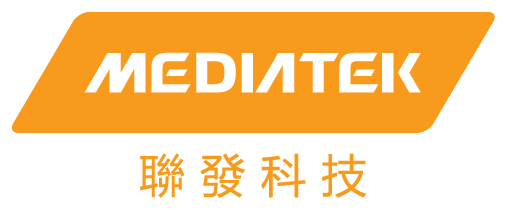Back to Industry Program Page >>
All times in local Taipei time.
TUESDAY, 8 DECEMBER 2020
14:00-15:30
Industry Panel 8 (IP-08, Live): Smart City and Healthcare Systems for Pandemic
16:00-17:30
Industry Panel 6 (IP-06, On-Demand): Massive MIMO Evolution Towards 2025 and Beyond (MM+)
WEDNESDAY, 9 DECEMBER 2020
11:00-12:30
Industry Panel 2 (IP-02, Live): Emerging and Commercialized 5G mm-Wave Radiation Technologies and Solutions
11:00-12:30
Industry Panel 4 (IP-04, On-Demand): Integrated Space-Air-Terrestrial Networks in the 5G+/6G Era
14:00-15:30
Industry Panel 7 (IP-07, On-Demand): A Smart Network of Service Robots
16:00-17:30
Industry Panel 5 (IP-05, On-Demand): Advanced Wireless Research Platforms towards 6G
THURSDAY, 10 DECEMBER 2020
14:00-15:30
Industry Panel 1 (IP-01, Live): Rethinking IP – Heresy or Necessity?
14:00-15:30
Industry Panel 3 (IP-03, Live): Is There a 6G for Business in 2030? - New Requirements, New Players
Industry Panel 1 (IP-01, Live): Rethinking IP – Heresy or Necessity?
Date/Time: 10 December 2020, Thursday: 14:00-15:30
Location: TICC R201 A
Organizers:
Alexander Clemm, Futurewei, USA
Cedric Westphal, Futurewei, USA
Panelists:
Cedric Westphal, Futurewei, USA (Moderator)
Alexander Clemm, Futurewei, USA
Jussi Kangasharju, University of Helsinki, Finland
Jeff Tantsura, Apstra, USA
Christian Jacquenet, Orange, France
Abstract: The networking landscape is expected to undergo profound changes over the course of the next decade. New networking use cases such as tele-driving and tele-operations are emerging that require high-precision communications with stringent latency and loss objectives that cannot be met by current technology. Pressure is mounting on industrial networks, up to this point a bastion from Internet technology, to converge. At the same time, other forces are becoming more pronounced, such as the “Manynets” phenomenon, which is beginning to fragment the existing Internet, and concerns about the increasing ossification of the Internet, which slows down the ability to innovate inside the network when the pace for needed innovation is actually accelerating. Considering all this, recent proposals for a “New IP” have emerged that suggest defining new solutions for IP networking. What sets these proposals apart is that they are aimed at Layer 3, the core layer of the Internet, not simply the transport or application layer. They claim that innovation at the IP layer is required to address the root of the issues that need to be confronted to unleash a new wave of Internet innovation. This, in turn, has been met with fierce resistance from the IETF and its governing body, the Internet Society, who as guardians of IP object to any proposals that put into question the “thin waist” defined by IP in the hourglass structure of the Internet protocol stack, and who claim that innovation outside IP itself will in fact be sufficient to meet emerging networking challenges. The panel will examine the issues underlying this controversy and panelists will represent the different sides of the argument. Specifically, panelists will debate whether network innovation inside IP itself needs to occur or whether work at other networking layers will be enough to address newly emerging challenges and issues that emerging applications are faced with.
Biography and Photo of Organizer(s):
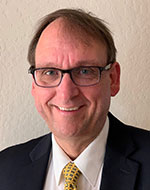 Alexander Clemm
Alexander Clemm
Futurewei, USA
Dr. Alexander Clemm is a Distinguished Engineer at Futurewei Technologies, USA. His current research interests include high precision networks, future networking services, manageability, network analytics, intent, and telemetry. Alex has served on the Organizing and Technical Program Committees of many management and network softwarization conferences, including as General Chair of CNSM 2007 , IM 2013 and as TPC Co Chair of IM 2005, NetSoft 2017, and IM 2019. In addition to papers and patents, he authored 12 RFCs and several books, including “Network Management Fundamentals”. He is the recipient of the 2020 Salah Aidarous Award given by IEEE CNOM and IFIP TC6.6 to an individual who has provided unremitting service and dedication to the IT and Telecommunications Network Operations and Management community.
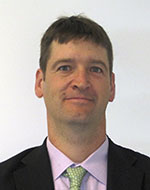 Cedric Westphal
Cedric Westphal
Futurewei, USA
Dr. Cedric Westphal is a Principal Research Architect with Futurewei working on future network architectures, both for wired and wireless networks. His current focus is on next generation Internet. He was an adjunct assistant, then associate professor with the University of California, Santa Cruz from 2009 to 2019. Prior to Futurewei, he was with DOCOMO Innovations from 2007 to 2011 in the Networking Architecture Group focusing on next generation network architectures. He was at Nokia Research Center (now Nokia Bell Labs) from 2000 to 2006. He has received a MSEE in 1995 from Ecole Centrale Paris, and a MS (1995) and PhD (2000) in EE from the University of California, Los Angeles. From 1997 to 2000, he was a visiting researcher at Stanford University. Cedric Westphal has authored and coauthored over a hundred journal and conference papers, including several best paper awards at conferences such as IEEE ICC’11, IEEE ICNC’18, IEEE MuSIC’16 and others. He has been awarded over thirty patents. He has received the IEEE Communication Society IINTC 2018 Technical Achievement Award to “recognize a lifelong set of outstanding technical contributions in the area of information infrastructure and networking.” He was an area editor for the ACM/IEEE Transactions on Networking, an assistant editor for (Elsevier) Computer Networks journal, and a guest editor for Ad Hoc Networks journal and ACM/IEEE JSAC. He has served as a reviewer for the NSF, GENI, the EU FP7, INRIA, and other funding agencies; he has chaired the technical program committee of several conferences, including IEEE ICC (NGN symposium), IEEE NFV-SDN or IEEE IPCCC, and he was the general chair for IEEE INFOCOM 2016. He is a senior member of the IEEE.
Biographies and Photos of Panelists:
 Cedric Westphal
Cedric Westphal
Futurewei, USA
Dr. Cedric Westphal is a Principal Research Architect with Futurewei working on future network architectures, both for wired and wireless networks. His current focus is on next generation Internet. He was an adjunct assistant, then associate professor with the University of California, Santa Cruz from 2009 to 2019. Prior to Futurewei, he was with DOCOMO Innovations from 2007 to 2011 in the Networking Architecture Group focusing on next generation network architectures. He was at Nokia Research Center (now Nokia Bell Labs) from 2000 to 2006. He has received a MSEE in 1995 from Ecole Centrale Paris, and a MS (1995) and PhD (2000) in EE from the University of California, Los Angeles. From 1997 to 2000, he was a visiting researcher at Stanford University. Cedric Westphal has authored and coauthored over a hundred journal and conference papers, including several best paper awards at conferences such as IEEE ICC’11, IEEE ICNC’18, IEEE MuSIC’16 and others. He has been awarded over thirty patents. He has received the IEEE Communication Society IINTC 2018 Technical Achievement Award to “recognize a lifelong set of outstanding technical contributions in the area of information infrastructure and networking.” He was an area editor for the ACM/IEEE Transactions on Networking, an assistant editor for (Elsevier) Computer Networks journal, and a guest editor for Ad Hoc Networks journal and ACM/IEEE JSAC. He has served as a reviewer for the NSF, GENI, the EU FP7, INRIA, and other funding agencies; he has chaired the technical program committee of several conferences, including IEEE ICC (NGN symposium), IEEE NFV-SDN or IEEE IPCCC, and he was the general chair for IEEE INFOCOM 2016. He is a senior member of the IEEE.
 Alexander Clemm
Alexander Clemm
Futurewei, USA
Dr. Alexander Clemm is a Distinguished Engineer at Futurewei Technologies, USA. His current research interests include high precision networks, future networking services, manageability, network analytics, intent, and telemetry. Alex has served on the Organizing and Technical Program Committees of many management and network softwarization conferences, including as General Chair of CNSM 2007 , IM 2013 and as TPC Co Chair of IM 2005, NetSoft 2017, and IM 2019. In addition to papers and patents, he authored 12 RFCs and several books, including “Network Management Fundamentals”. He is the recipient of the 2020 Salah Aidarous Award given by IEEE CNOM and IFIP TC6.6 to an individual who has provided unremitting service and dedication to the IT and Telecommunications Network Operations and Management community.
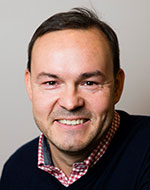 Jussi Kangasharju
Jussi Kangasharju
University of Helsinki, Finland
Prof. Jussi Kangasharju received his MSc from Helsinki University of Technology in 1998. He received his Diplome d'Etudes Approfondies (DEA) from the Ecole Superieure des Sciences Informatiques (ESSI) in Sophia Antipolis in 1998. In 2002 he received his PhD from University of Nice Sophia Antipolis/Institut Eurecom. In 2002 he joined Darmstadt University of Technology (TUD), first as post-doctoral researcher, and from 2004 onwards as assistant professor. Since June 2007 Jussi is a professor at the department of computer science at University of Helsinki. Between 2009 and 2012 he was the director of the Future Internet research program at Helsinki Institute for Information Technology (HIIT). Jussi's research interests are information-centric networks, edge and cloud computing, content distribution, opportunistic networks, and green ICT. He is a member of IEEE and ACM.
 Jeff Tantsura
Jeff Tantsura
Apstra, USA
Jeff Tantsura has been in the networking space for 25+ years and has authored/contributed to many RFC's and patents, worked in both SP and vendor environments. He is co-chair of IETF Routing Working Group, chartered to work on New Network Architectures and Technologies, including protocol independent YANG models and Next Gen Routing Protocols as well as co-chair of RIFT (Routing in Fat Trees) Working Group chartered to work on the new routing protocol that specifically addresses Fat Tree topologies typically seen in the Data Center environment. Jeff serves the Internet Architecture Board (IAB). His focus has been on 5G transport and integration with RAN, IoT, MEC, Low Latency networking and Data modeling. He’s also a board member of SF Bay Area ISOC Chapter. Jeff is Head of Networking Strategy at Apstra, a company which champions Intent Based Networking, where he’s defining the company’s networking strategy and technologies.
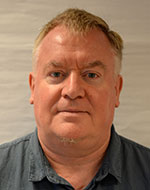 Christian Jacquenet
Christian Jacquenet
Orange, France
Christian Jacquenet graduated from the Ecole Nationale Supérieure de Physique de Marseille, a French school of engineers. He joined Orange in 1989, and he’s currently the Referent Expert of the “Networks of the Future” Orange Expert community. Until recently, he was the Director of the Strategic Program Office for advanced IP networking within Orange Labs. He is also the head of Orange’s IPv6 Program that aims at defining and driving the enforcement of the Group’s IPv6 strategy and which yielded the deployment of IPv6 networks and services in most European and African Orange affiliates since 2010. He leads development activities in the areas of network automation (e.g., Software-Defined Networking (SDN, automated service delivery procedures combined with Artificial Intelligence techniques, intent-based networking), and IP networking techniques. He authored and co-authored several Internet standards in the areas of dynamic routing protocols and resource allocation techniques, as well as numerous papers and books in the areas of IP multicast, traffic engineering and automated IP service delivery techniques. He also holds 20+ patents in the areas of advanced home and IP networking techniques.
Industry Panel 2 (IP-02, Live): Emerging and Commercialized 5G mm-Wave Radiation Technologies and Solutions
Date/Time: 9 December 2020 Wednesday, 11:00-12:30
Location: TICC 4F Elegance Lounge
Organizer: Huan-Chu Huang, CTO, Etheta Communication Technologies Co., Ltd., China
Panelists:
Ruixin Wang, Director, Vivo Mobile Communication Co., Ltd., China
Huan-Chu Huang, CTO, Etheta Communication Technologies Co., Ltd., China
Su-Wei Chang, President, TMY Technology Inc., Taiwan
Philip Chang, Sr. Project Manager, Keysight Technologies Ltd., Taiwan
Abstract: Owing to the 5G age, the mm-Wave technologies and applications are getting more and more important and popular. Obviously, radiations of mm-Wave are quite crucial to the mm-Wave wireless communication performance. However, the mm-Wave radiation technologies and solutions are significantly different from those for the conventional FR1 (non-mm-Wave) cellular bands. Therefore, this industry panel will mainly focus on the 5G mm-Wave radiation technologies and solutions, including antenna designs, beamforming-system designs, and OTA (over-the-air) chamber designs, to discuss, share and complement the technological understanding of and information updates on the latest studies, emerging development, and commercialized progress from the industry perspectives. Through this industry panel, the new inspiration and scope expansion for the researchers and designers from the Comm. and related communities hence can be achieved to facilitate and benefit their future studies or the product developments. Thus, all interested audience are cordially welcome to enjoy this industry panel.
Biography and Photo of Organizer(s):
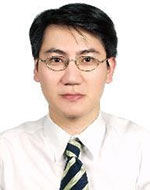 Huan-Chu Huang
Huan-Chu Huang
CTO, Etheta Communication Technologies Co., Ltd., China
Dr. Huan-Chu Huang received his Ph.D. degree from the institute of Communication Engineering (EM group) at National Taiwan University (NTU), Taipei, Taiwan. Since 2005, he has worked for several global smartphone leading companies, such as HTC, Nokia, Huawei, Apple, and Vivo, all in the antenna design area for mobile devices. Currently, he is the CTO at Etheta Communication Technology. Up to now, he holds over 50 international patents and publishes over 30 IEEE journal and conference papers. He also co-authored the whitepaper of “GTI sub-6 GHz 5G Device” and is the reviewer for IEEE Access, IEEE AWPL, MOTL, etc. His main research interests involve mm-Wave antenna designs for cellular phones and reconfigurable antennas.
Biographies and Photos of Panelists:
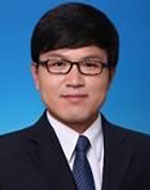 Ruixin Wang
Ruixin Wang
Director, Vivo Mobile Communication Co., Ltd., China
Dr. Ruixin Wang received the Ph.D. degree from Beijing University of Posts and Telecommunications, in 2015. He was an associate Professor in China Academy of Information and Communications Technology (CAICT), and now is working with vivo Communication Technology Co. Ltd as a Standardization Director. His is leading 5G OTA testing standardization in 3GPP and China Communications Standards Association (CCSA). He is the rapporteur/editor of several 3GPP 5G standards (TR38.810 mm-Wave testing, TR38.827 NR MIMO OTA, TR38.884 FR2 test enhancement, and TS38.151 MIMO performance specification). His current focus is on 5G OTA testing, MIMO OTA, 5G VDT, channel modeling and positioning.
 Huan-Chu Huang
Huan-Chu Huang
CTO, Etheta Communication Technologies Co., Ltd., China
Dr. Huan-Chu Huang received his Ph.D. degree from the institute of Communication Engineering (EM group) at National Taiwan University (NTU), Taipei, Taiwan. Since 2005, he has worked for several global smartphone leading companies, such as HTC, Nokia, Huawei, Apple, and Vivo, all in the antenna design area for mobile devices. Currently, he is the CTO at Etheta Communication Technology. Up to now, he holds over 50 international patents and publishes over 30 IEEE journal and conference papers. He also co-authored the whitepaper of “GTI sub-6 GHz 5G Device” and is the reviewer for IEEE Access, IEEE AWPL, MOTL, etc. His main research interests involve mm-Wave antenna designs for cellular phones and reconfigurable antennas.
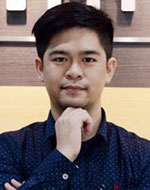 Su-Wei Chang
Su-Wei Chang
President, TMY Technology Inc., Taiwan
Mr. Su-Wei Chang received his B.S. degree in Electrical Engineering from Feng-Chia University in 2005. He then worked in Academia Sinica Institute of Astronomy & Astrophysics (ASIAA) as a microwave/ sub-mm wave receiver engineer, where he was involved in developing the mm-wave and sub-mm wave receiver system for international radio telescopes. He was also invited to Harvard-Smithsonian Center for Astrophysics to develop 660 GHz receiver while working in ASIAA. He is currently a Ph.D. candidate in the department of Electrical and Computer Engineering at University of Mass-Amherst. His research interests include noises, cryogenic circuits and applications, silicon-based RFIC and MMIC up to mm-wave bands. In 2014, he founded TMYTEK, which focuses on 5G mm-Wave technologies, and is currently the president.
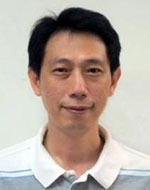 Philip Chang
Philip Chang
Sr. Project Manager, Keysight Technologies Ltd., Taiwan
Philip Chang joined Hewlett Packard Taiwan in the beginning of 1999 and have kept involving in wireless communication measurement through Agilent spin-off in 2000 and the separation of Keysight in 2014. Philip is good at supporting Spectrum, VSA, Signal Generator, Wireless OBT and customized total solution, which includes the project solution, instrument support and consulting. He plays an important role of Wireless, EMC, AD and next generation communication like 5G technologies and application. Philip holds a Master degree in Transportation and Communication Manager Science from National Cheng Kung University and Bachelor degree in Physics from Tung-Hai University in Taiwan.
Industry Panel 3 (IP-03, Live): Is there a 6G for Business in 2030? - New requirements, new players
Date/Time: 10 December 2020, Thursday: 14:00-15:30
Location: TICC 3F South Lounge
Organizers:
Sudhir Dixit, Vino Vinodrai, and Nigel Jefferies, Wireless World Research Forum (WWRF)
Panelists:
Sudhir Dixit, Wireless World Research Forum (moderator), USA
Mike Short, Department for International Trade, UK
Sureswaran Ramadass, Malaysia University of Science and Technology, Malaysia
Simon Fletcher, Real Wireless, UK
Iwao Hosako, National Institute of Information and Communications Technology, Japan
Abstract: While there is much discussion in Europe, Asia and the Americas over what technologies might be employed in systems beyond 5G, there is insufficient understanding of how such systems might develop, given the enormous investment in early-stage 5G systems and the grand claims for what 5G can do. Researchers, industry and regulators need to identify clear goals for the next generation of mobile systems, and develop plans for how to achieve them using current and future technology. WWRF is progressing its own work on this topic but is aware of the importance of a global debate. The panel will be asked to stimulate and progress the discussion on this important subject.
The goal of this panel is to provide a launchpad for the articulation of a short- and long-term strategy and vision for the development of systems beyond 5G. This will help to steer the work of WWRF members and other researchers during the next five to ten years. A document, which will also serve as part of the workplan for a longer and larger WWRF follow-up project is the basis of this proposal. The immediate output from the panel will be made available as a white paper to the external community. The discussion should cover:
- Business opportunities with value propositions for the stakeholders (governments, manufacturers, service providers, users and enterprises, and academics & innovators)
- Potential killer applications that require 6G to sustain the RoI from 6G investments
- Potential emerging business models
- The key requirements from developing and developed regions.
- Technology directions and the scope of change to network architectures.
Biography and Photo of Organizer(s):
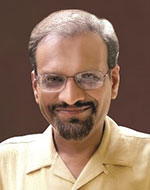 Sudhir Dixit
Sudhir Dixit
Wireless World Research Forum (WWRF), USA
Sudhir Dixit is a Co-Founder, Senior Fellow and Evangelist at the Basic Internet Foundation in Oslo, Norway, and heads its US operations. He is also associated with the Academy of Finland Flagship Programme, 6GFlagship, led by the Centre for Wireless Communications, University of Oulu, Finland. From 2015 to 2017 he was the CEO and Co-Founder of a start-up, Skydoot, Inc. From 2009 to 2015, he was a Distinguished Chief Technologist and CTO of the Communications and Media Services for the Americas Region of Hewlett-Packard Enterprise Services in Palo Alto, CA, and the Director of Hewlett-Packard Labs India in Palo Alto and Bangalore. Before joining HP, he held various leadership positions at BlackBerry, Nokia, NSN and Verizon Communications.
He has been a technical editor of IEEE Communications Magazine, and is presently a Board Member & Working Group Chair at the Wireless World Research Forum (WWRF). He is also the Vice Chair for Americas at the WWRF. He is on the editorial boards of IEEE Spectrum Magazine and Springer’s Wireless Personal Communications Journal. He is a Co-Chair of the Industry Engagement Committee of the IEEE Future Network Initiative and is on its Industry Outreach Board (IOB). In 2018, he was appointed a Distinguished Lecturer by the IEEE Communications Society. From 2010 to 2012, he was an Adjunct Professor of Computer Science at the University of California, Davis, and, since 2010, he has been a Docent at the University of Oulu, Finland. A Life Fellow of the IEEE, IET and IETE, Dixit holds a Ph.D. from the University of Strathclyde, Glasgow, U.K. and an M.B.A. from the Florida Institute of Technology, Melbourne, Florida.
Biographies and Photos of Panelists:
 Sudhir Dixit
Sudhir Dixit
Wireless World Research Forum (WWRF), USA
Sudhir Dixit is a Co-Founder, Senior Fellow and Evangelist at the Basic Internet Foundation in Oslo, Norway, and heads its US operations. He is also associated with the Academy of Finland Flagship Programme, 6GFlagship, led by the Centre for Wireless Communications, University of Oulu, Finland. From 2015 to 2017 he was the CEO and Co-Founder of a start-up, Skydoot, Inc. From 2009 to 2015, he was a Distinguished Chief Technologist and CTO of the Communications and Media Services for the Americas Region of Hewlett-Packard Enterprise Services in Palo Alto, CA, and the Director of Hewlett-Packard Labs India in Palo Alto and Bangalore. Before joining HP, he held various leadership positions at BlackBerry, Nokia, NSN and Verizon Communications.
He has been a technical editor of IEEE Communications Magazine, and is presently a Board Member & Working Group Chair at the Wireless World Research Forum (WWRF). He is also the Vice Chair for Americas at the WWRF. He is on the editorial boards of IEEE Spectrum Magazine and Springer’s Wireless Personal Communications Journal. He is a Co-Chair of the Industry Engagement Committee of the IEEE Future Network Initiative and is on its Industry Outreach Board (IOB). In 2018, he was appointed a Distinguished Lecturer by the IEEE Communications Society. From 2010 to 2012, he was an Adjunct Professor of Computer Science at the University of California, Davis, and, since 2010, he has been a Docent at the University of Oulu, Finland. A Life Fellow of the IEEE, IET and IETE, Dixit holds a Ph.D. from the University of Strathclyde, Glasgow, U.K. and an M.B.A. from the Florida Institute of Technology, Melbourne, Florida.
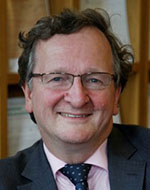 Mike Short
Mike Short
Department for International Trade, UK
Mike Short CBE, after 30 years in telecommunications with Telefonica, joined the Department for International Trade (DIT) as the department’s first Chief Scientific Adviser in December 2017. Mike leads the science and engineering profession in the department and ensures its policy is informed by the best science, engineering and technical advice. He advises on the technical aspects of future trade deals as DIT looks to create new arrangements following Brexit, and works with the UK’s research, development and academic communities to boost scientific and engineering exports.
Mike has over 40 years’ experience in electronics and telecommunications and served as Vice President of Telefonica, the parent company of the O2 mobile phone network, for 17 years to December 2016. In this post, he managed the launch of 2G (GSM) and 3G mobile technologies in the UK, and led research and development for Telefonica Europe. His career also includes the promotion of international technical standards in mobile technology, and he is also a former Chairman of the Global GSM Association, the UK Mobile Data Association, and president of the Institution of Engineering and Technology.
He is currently a visiting Professor at the universities of Surrey, Coventry, Leeds, Lancaster and Salford, where in recent years he has led the development on collaborations in areas such as smart cities, digital healthcare, cybersecurity and driverless vehicles. He was honoured with a CBE in 2012 for his services to the mobile industry.
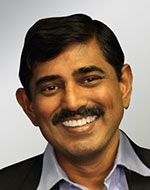 Sureswaran Ramadass
Sureswaran Ramadass
Malaysia University of Science and Technology, Malaysia
Sureswaran Ramadass is Professor Emeritus at the Malaysian University of Science and Technology (MUST). He is also the Chairman (Steering Committee) of the ITU (International Telecommunications Union) IPv6 and IOT Center of Expertise, and focuses on 5G technology. Prior to this, he was the founding Director and Professor at the National Advanced IPv6 Centre of Excellence (NAV6), Universiti Sains Malaysia. In Industry, he is the Chief Scientist at NLTVC Sdn Bhd. (NLTVC is a Next Generation Internet Communications research and development company)
He obtained his BsEE/CE (Magna Cum Laude) and Masters in Electrical and Computer Engineering from the University of Miami in 1987 and 1990 respectively. He graduated top student in the College of Engineering. He obtained his PhD from Universiti Sains Malaysia (USM) in 2000 while serving as a full time faculty. Some of his recognitions include: The “Anugerah Tokoh Negara” (National Academic Leader) award for Innovation and Commercialization in 2008 by the Minister of Higher Education. This award is given in recognition to contributions to Innovation and commercialisation in the area of science and technology; Emeritus Chair, IPv6 Forum Education Programme; The Wireless World Research Forum Fellow in April 2010; Malaysian Innovation Award by the Prime Minister in 2007 and again by the Minister of Science and Technology in 2009.
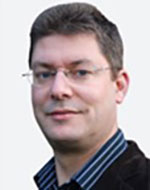 Simon Fletcher
Simon Fletcher
Real Wireless, UK
Simon Fletcher takes responsibility for overall technical and innovation strategy at Real Wireless. He is co-Chair of the International Engagement Working Group in the UK5G Advisory Board and a Board member of WWRF.
Simon has spent over 20 years working in global product development and telecoms infrastructure systems. In NEC Corporation he played a key role in the formation of Joint Ventures for the development of 3G and 4G products and establishing Core Teams targeting new product development. He represented NEC Corporation in industry eco-system forums during early commercial product launches and directed projects addressing future cities, and the application of 5G and IoT in industry verticals. Simon directs strategic Real Wireless including EC H2020 project engagements and is a Director of mVCE, a research collaboration between Universities and Industry in the UK and which is already exploring the “Beyond 5G” agenda. He has acted as consortium Innovation Manager for a project that pioneered development of 5G network slicing and cloud architectures and currently leads the Business Models and industry engagement activities for the 5G-TOURS project which covers the application of 5G in Tourism, Health and Transport sectors. He led a UK strategic study on Future Communications infrastructure use cases and costs for the UKs National Infrastructure Commission, and manages new product and service development for Real Wireless through projects in the UK, Europe and beyond. Multi-disciplinary projects are typically focussed on network economics and dimensioning, commercial case analysis grounded in techno-economics, utilising in-house software tools and consulting expertise.
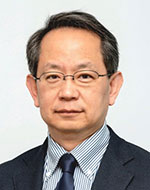 Iwao Hosako
Iwao Hosako
National Institute of Information and Communications Technology, Japan
Iwao Hosako received his Ph.D. from the University of Tokyo in 1993. After two years with NKK Corp’s ULSI Laboratory from 1993 to 1994, he joined Communications Research Laboratory (former name of NICT). He is currently the Director General of the Wireless Networks Research Center and the Terahertz Research Center at the National Institute of Information and Communications Technology (NICT), Japan. His research focuses on terahertz band semiconductor devices, cameras, and wireless systems. He was the Vice-Chair of the IEEE 802.15.3d Task Group and is currently the Vice-Chair of the IEEE 802.15 Standing Committee Terahertz (SC-THz). He was serving as a working group member of the Beyond 5G (6G) Promotion Strategy Roundtable of the Ministry of Internal affairs and Communications, Japan from Jan. 2020 to Jun. 2020.
Industry Panel 4 (IP-04, On-Demand): Integrated Space-Air-Terrestrial Networks in the 5G+/6G Era
Date/Time: 9 December 2020 Wednesday, 11:00-12:30
Location: Virtual Platform
Organizer: Mohamed-Slim Alouini, King Abdullah University of Science and Technology (KAUST), Saudi Arabia
Panelists:
Sandy Allsopp, Allsopp Helikites Limited, UK
Lingyang Song, Peking University, China
Walid Saad, Virginia Tech, USA
Brian Barritt, Facebook Connectivity Lab, USA
Abstract: One of the main reasons attributed to the digital divide is the business cost and return on investment (RoI). In poorer or lower population density regions, the cost of deployment of optical fiber in the backbone network and related infrastructure, in particular a reliable electrical power grid, becomes prohibitively large, whereas the RoI remains marginal at best. In this scenario, a viable solution to cut down on the cost factor is to deploy satellites in the backbone network in order to provide connectivity to far-flung or less populated areas, to passengers in airplanes, ships, and trains, or to disconnected people in areas affected by natural disasters. More specifically, a constellation of satellites can provide worldwide coverage if a sufficient number of those are utilized. For instance, in recent years, different constellations of satellites have been proposed to provide global broadband access to Internet which includes the Starlink supported by SpaceX with 12000 LEO satellites, Amazon’s Project Kuiper with 3236 LEO satellites , and Telesat LEO with 300 to 500 satellites. Such a large number of satellites has allowed mass production of components, thereby resulting in a significant reduction in satellite manufacturing costs.
Alternatively, if a large footprint on the remote location is not required, a high altitude platform (HAP) or a swarm/cascade of HAP’s or balloons/helikites can be used in the backbone network in the sky. The service model envisaged in this regard comprises of two configurations. In the first arrangement, a single HAP functions in a “tower-in-the-air” configuration whereby it relays data obtained from the ground station (uplink) to various service delivery stations (such as base stations) in the downlink. In the second configuration, a swarm/cascade of HAP’s is used as both relay nodes and service delivery devices for the local users. The same configuration can also be used in conjunction with LEO or MEO satellites if the area to be covered is significantly large. In this context, this panel aims to go over the recently proposed integrated space-air-terrestrial network solutions to provide high-speed connectivity not only in under-covered/remote/rural areas but also to moving cells in the air (airplanes) and the sea (cruises/ships).
Biography and Photo of Organizer(s):
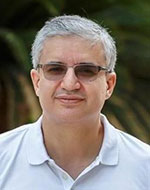 Mohamed-Slim Alouini
Mohamed-Slim Alouini
King Abdullah University of Science and Technology (KAUST), Saudi Arabia
Dr. Alouini was born in Tunis, Tunisia. He received the PhD in Electrical Engineering from California Institute of Technology (Caltech) in 1998. He served as a faculty member in the University of Minnesota, Minneapolis, MN, USA, then in the Texas A&M University at Qatar, Education City, Doha, Qatar before joining King Abdullah University of Science and Technology (KAUST), Thuwal, Makkah Province, Saudi Arabia as a Professor of Electrical Engineering in 2009. His current research interests include modeling, design, and performance evaluation of emerging and future wireless communication systems and networks.
Biographies and Photos of Panelists:
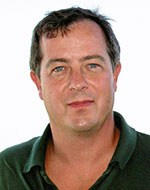 Sandy Allsopp
Sandy Allsopp
Allsopp Helikites Limited, UK
Founder, joint-owner and CEO of:
Allsopp Helikites Limited
Airborne Communications Ltd
Designer off the Helikite lighter-than-air tethered aerostat.
Holder of UK and US Helikite patents.
Holder of all Helikite trademarks
In 1993, whilst working as a design consultant, Sandy Allsopp designed and patented the Helikite which is the world’s only high-altitude, stable, all-weather, lighter-than-air kite. He has 27 years experience of design, manufacture, flight and worldwide sale of Helikites, lighter-than-air aircraft, and aerostat support systems. He designed the Helibase aerostat handling system for the US Air Force and the Helikite Tactical Launch Trailer which are the two standard systems for inflating and flying Helikites with minimal personnel in all weather conditions.
Helikites are now manufactured in numerous sizes from 1m3 up to 250m3. They are capable of lifting numerous payloads up to 7,000ft, from land, small boats, or on ships steaming thousands of miles across oceans.
Sandy Allsopp is the most experienced Helikite operator in the world and teaches the Helikite handling course for Allsopp Helikites Ltd.
Other specialities include: Airborne Radio Communications, lightweight tethers, aerial video/photography, maritime operations, and aerostat winches.
Allsopp Helikites Ltd and Airborne Communications Ltd, operate worldwide. Customers include: NATO, British Army, Royal Marines, Royal Navy, US Navy/Army/Air Force, ADF, DSTL, DARPA, European Commission, British Antarctic Survey, Qinetiq, Sandia Labs, Max Plank Institute.
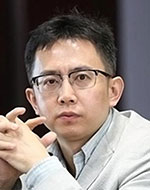 Lingyang Song
Lingyang Song
Peking University, China
Lingyang Song received his PhD from the University of York, UK, in 2007, where he received the K. M. Stott Prize for excellent research. He worked as a research fellow at the University of Oslo, Norway until rejoining Philips Research UK in March 2008. In May 2009, he joined the School of Electronics Engineering and Computer Science, Peking University, and is now a Boya Distinguished Professor. His main research interests include wireless communications, mobile computing, and machine learning.
Dr. Song has co-authored of 4 text books, including “Wireless Device-to- Device Communications and Networks,” and “Full-Duplex Communications and Networks,” by Cambridge University Press, UK. He has co-edited two books: “Orthogonal Frequency Division Multiple Access (OFDMA)-Fundamentals and Applications,” and “Evolved Network Planning and Optimization for UMTS and LTE (IEEE ComSoc Best Readings), ” by Auerbach Publications, CRC Press, USA.
Dr. Song is the co-author of 10 best paper awards and 1 best demo award, including IEEE Leonard G. Abraham Prize in 2016 (publication in the IEEE Journal on Selected Areas in Communications in the previous 3 calendar years), best paper awards from IEEE Communication Society Flagship Conference: IEEE ICC 2014, IEEE ICC 2015, IEEE Globecom 2014, and the best demo award in the ACM Mobihoc 2015. He received National Science Fund for Distinguished Young Scholars in 2017, First Prize in Nature Science Award of Ministry of Education of China in 2017, National Science Fund for Excellent Young Scholars in 2013, and IEEE Communications Society Asia Pacific (AP) Young Researcher Award in 2012.
Dr. Song has served as a Distinguished Lecturer of IEEE Communications Society (2015-2018), an Area Editor of IEEE Transactions on Vehicular Technology (2019-), an Editor of IEEE Transactions on Communications (2019-), Editor of China Communications (2015-), and Editor of Transactions on Wireless Communications (2013-2018). He also serves as a Section Editor for Springer Handbook of Cognitive Radio (2016-). He served as the TPC co-chairs for ICUFN 2011/2012 and IEEE ICCC 2019. He served as symposium co-chairs for IEEE ICC 2014/2016, IEEE VTC 2016 spring, and IEEE Globecom 2016. He has served as Vice Chair (2016-) of IEEE Communications Society Cognitive Network Technical Committee, and Vice Chair (2016-) of IEEE Communications Society Asia Pacific Board Technical Affairs Committee.
Dr. Song is a Fellow of IEEE, and a Clarivate Analytics Highly Cited Researcher in 2019.
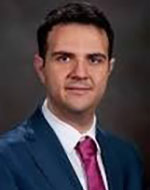 Walid Saad
Walid Saad
Virginia Tech, USA
Walid Saad (Fellow, IEEE) received the Ph.D. degree from the University of Oslo in 2010. He is currently a Professor with the Department of Electrical and Computer Engineering, Virginia Tech, where he leads the Network sciEnce, Wireless, and Security (NEWS) Laboratory. His research interests include wireless networks, machine learning, game theory, security, unmanned aerial vehicles, cyber-physical systems, and network science. He was a recipient of the NSF CAREER Award in 2013, the AFOSR Summer Faculty Fellowship in 2014, the Young Investigator Award from the Office of Naval Research (ONR) in 2015, the 2015 Fred W. Ellersick Prize from the IEEE Communications Society, the 2017 IEEE ComSoc Best Young Professional in Academia Award, the 2018 IEEE ComSoc Radio Communications Committee Early Achievement Award, and the 2019 IEEE ComSoc Communication Theory Technical Committee. He was the author/coauthor of nine conferences best paper awards at WiOpt in 2009, ICIMP in 2010, IEEE WCNC in 2012, IEEE PIMRC in 2015, IEEE SmartGridComm in 2015, EuCNC in 2017, IEEE GLOBECOM in 2018, IFIP NTMS in 2019, and IEEE ICC in 2020. He received the Dean’s Award for Research Excellence from Virginia Tech in 2019. From 2015 to 2017, he was named the Stephen O. Lane Junior Faculty Fellow at Virginia Tech and the College of Engineering Faculty Fellow in 2017. He serves as an Editor for IEEE Transactions on Wireless Communications, IEEE Transactions on Mobile Computing, and IEEE Transactions on Cognitive Communications and Networking. He is an Editor-at-Large of IEEE Transactions on Communications. He is an IEEE Distinguished Lecturer.
 Brian Barritt
Brian Barritt
Facebook Connectivity Lab, USA
Brian Barritt is a software engineering manager at Facebook Connectivity where he supports Magma, an open-source software platform that gives network operators an open, flexible and extendable mobile core network solution. Magma’s mission is to connect the world to a faster network by enabling service providers to build cost-effective and extensible carrier-grade networks.
Prior to joining Facebook in August of this year, he was a Senior Staff Software Engineer at Alphabet. At Google he founded the Temporospatial Software Defined Networking infrastructure that powers Loon and other non-terrestrial networks. Dr. Barritt has more than 15 years of experience in
advanced wireless networks. Prior to joining Google in 2014, he led engineering programs at Cisco and for NASA's Space Communications and Navigation program.
Brian earned an MBA in Management of Technology & Innovation from the University of Minnesota and BS, MS, and Ph.D. degrees in Computer Engineering from Case Western Reserve University.
Industry Panel 5 (IP-05, On-Demand): Advanced Wireless Research Platforms towards 6G
Date/Time: 9 December 2020 Wednesday, 16:00-17:30
Location: Virtual Platform
Organizer: Antonio de la Oliva, University Carlos III of Madrid,Spain
Panelists:
Alain Mourad, InterDigital, UK
Serge Fdida, Sorbonne Université, France
Abhimanyu Gosain, Northeastern University, USA
Abstract: This panel aims at discussing the key drivers and technology trends being envisaged for future wireless networks (2030). The European Union and United States of America have both started their own research programmes with the objective to lead the evolution towards next generation wireless networks. Although the objective is the same, the European and USA approaches seem to differ significantly in inception and execution.
Members of this panel include an industrial thought leader (Alain Mourad) from Interdigital, who is involved in both USA and European wireless research programmes and knows from first-hand the advantages and disadvantages of each approach. Serge Fdida, coordinator of the EMPOWER project has a long experience on the management of shared experimental platforms, especially as coordinator of the federated OneLab facility, the FIT French research infrastructure or the PlanetLab Europe testbed. Finally, Abhimanyu Gosain, as technical programme director of the PAWR office is the key person regarding the North American advanced wireless research platforms.
This panel aims at discussing a mix of market and technology questions such as:
- What are the key drivers; technical and societal, influencing research programmes towards 6G?
- What are the key technology trends in the wireless system and in the network?
- How are different countries, noticeably in EU and USA approaching the research towards 6G?
- Is the role of experimental research becoming more or less important?
- What makes the case to strengthen cooperation on the research platforms?
- How the costs of such platforms should be shared between public and private organizations?
- Do we see the need for a different governance model of these research platforms than what we are used to?
- How should non-traditional partner requirements (e.g. from Vertical Industries) be incorporated in future experimental wireless research platforms?
- What needs to be done to ensure large participation and use of these research platforms?
- How do we ensure reproducibility of the experiments? What models for experimental data sharing and governance need to be considered?
Biography and Photo of Organizer(s):
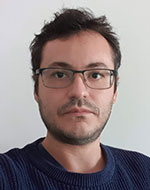 Antonio De La Oliva Delgado
Antonio De La Oliva Delgado
University Carlos III of Madrid
Antonio de la Oliva received his telecommunications engineering degree in 2004 and his Ph.D. in 2008 from the Universidad Carlos III Madrid (UC3M), Spain, where he has been an associate professor since then. He is an active contributor to IEEE 802 where he has served as Vice-Chair of IEEE 802.21b and Technical Editor of IEEE 802.21d. He has also served as a Editor of several journals and magazines, including Elsevier Computer Communications and IEEE Communications Magazine. He has published more than 50 papers on different networking areas. He has participated in several EU funded research projects and he is currently coordinating the H2020 EC/TW joint project 5G-DIVE.
Biographies and Photos of Panelists:
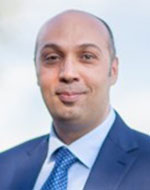 Alain Mourad
Alain Mourad
InterDigital, UK
Dr Alain Mourad is a Director Engineering R&D at InterDigital. He is currently leading the research and development of Next Generation Radio Access Networks (NG-RAN) at InterDigital European Labs (UK and Germany). Prior to joining InterDigital, Dr. Mourad was a Principal Engineer at Samsung Electronics R&D (UK) and previously a Senior Researcher at Mitsubishi Electric R&D Centre Europe (France). He is a prolific inventor with over 50 issued patents and a thought leader with numerous talks and publications. He received the Inventor of the Year Award from Samsung Electronics R&D in 2012 and 2013, InterDigital Innovation Awards in 2016 and 2018, and the 2018 Global Telecoms Awards “Highly Commended” in the category “Advancing the road to 5G”. He is currently serving as Technical Manager of H2020 EU/TW 5G-DIVE project.
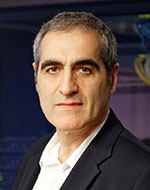 Serge Fdida
Serge Fdida
Sorbonne Université
Serge Fdida is a Professor with Sorbonne Université since 1995. He has been leading many research projects in High Performance Networking in France and Europe, notably pioneering the European activity on federated Internet testbeds. Currently, he is coordinating the French National Research Instrument FIT and the OneLab facility, two large test platforms on Future Internet technologies. He is a Distinguished ACM Member and an IEEE Senior member. He was one of the founders of the ACM Conext conference, general chair of ACM Mobicom 2015 and IEEE Infocom 2019. Serge Fdida has also developed a strong experience related to innovation and industry transfer, - he was the co-founder of the Qosmos company, - one of the active contributors to the creation of the Cap Digital cluster in Paris, and the President of the EIT Health French community. He is currently coordinating the H2020 CSA EMPOWER.
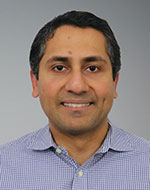 Abhimanyu Gosain
Abhimanyu Gosain
Northeastern University
Abhimanyu (Manu) Gosain is a Senior Technical Program Director for PAWR and Director of Industry Engagement for Institute of Wireless Internet of Things at Northeastern University. In this role, he is in charge of setting strategic goals and the research agenda for a $100 million public-private partnership for the NSF Platforms for Advanced Wireless Research (PAWR) program and $25M DARPA Colosseum program. His numerous professional publications, board and advisory role participation in open-source consortium(s) exemplify use-inspired basic research in the field of networking technologies such as LTE, 5G, dispersed computing, edge computing and Internet of Things. He is an IEEE Senior Member. He received his M.S. degree from Tufts University and M.B.A. from Boston University with High Honors.
Industry Panel 6 (IP-06, On-Demand): Massive MIMO Evolution towards 2025 and Beyond (MM+)
Date/Time: 8 December 2020 Tuesday, 16:00-17:30
Location: Virtual Platform
Organizer: Peiying Zhu, IEEE Fellow, Huawei Fellow and Senior Vice President of Wireless Research, Canada
Panelists:
Robert Heath, IEEE Fellow, North Carolina State University, USA
Marco Di Renzo, CNRS Research Director, IEEE Fellow, CNRS & Paris-Saclay University, France
Elisabeth De Carvalho, Professor, Aalborg University, Denmark
Abstract: Massive MIMO is seen as a key enabling technology for 5G in terms of capacity improvement and coverage enhancement. Major advances have been made by 3GPP and mobile vendors in order to bring Massive MIMO to reality. At the same time, further Massive MIMO technology evolution is also being continued to satisfy higher network requirements such as extremely high data rates for emerging high-definition videos and AR/VR services, friendly and consistent mobile UE experience, ultra-low latency and super dense connectivity.
In this panel, we will bring leading experts to discuss the potential evolution directions of the Massive MIMO technology towards the future. As such, the following topics shall be covered by the panel:
- High-efficiency CSI acquisition for numerous scenarios, such as low-overhead for multi-user multiplexing, robustness for high-speed mobility, and unified FDD/TDD by virtue of channel reciprocity.
- User centric no cell (UCNC) deployment, such as powerful interference suppression precoding and intelligent coordinated transmission scheme.
- Agile beam management for mmWave and mobility, such as blockage prediction and fast intra-cell and inter-cell beam switching.
- AI and ML, expected to be the foundation for intelligent air interface design of massive MIMO transceivers.
- Novel antenna system architectures, such as extremely large aperture arrays (ELAA) and smart surfaces (e.g., reconfigurable intelligent surface (RIS), intelligent reflecting surface (IRS) and large intelligent surface (LIS)), and corresponding communication system design.
Biography and Photo of Organizer(s):
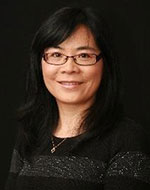 Peiying Zhu
Peiying Zhu
IEEE Fellow, Huawei Fellow and Senior Vice President of Wireless Research, Canada
Peiying Zhu is a Huawei Fellow and IEEE Fellow. She is currently leading 5G wireless system research in Huawei. The focus of her research is advanced wireless access technologies with more than 200 granted patents. She has been regularly giving talks and panel discussions on 5G vision and enabling technologies. She served as the guest editor for IEEE Signal processing magazine special issue on the 5G revolution and IEEE JSAC on Deployment Issues and Performance Challenges for 5G. She co-chaired various 5G workshops in IEEE GLOBECOM. She is actively involved in 3GPP and IEEE 802 standards development. She is currently a WiFi Alliance Board member. Prior to joining Huawei in 2009, Peiying was a Nortel Fellow and Director of Advanced Wireless Access Technology in the Nortel Wireless Technology Lab. She led the team and pioneered research and prototyping on MIMO-OFDM and Multi-hop relay. Many of these technologies developed by the team have been adopted into LTE standards and 4G products. Peiying Zhu received the Master of Science degree and Doctorate Degree from Southeast University and Concordia University in 1985 and 1993, respectively.
Biographies and Photos of Panelists:
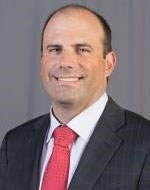 Robert Heath
Robert Heath
IEEE Fellow, North Carolina State University, USA
Robert W. Heath Jr. received the Ph.D. in EE from Stanford University. He Joined the Department of Electrical and Computer Engineering at North Carolina State University in August 2020. From 2002 to 2020, he was with the University of Texas at Austin where he was involved in the leadership of their wireless group, and created an initiative to bring together communications, sensing, and machine learning. He is also the President and CEO of MIMO Wireless Inc and Chief Innovation Officer at Kuma Signals LLC. Prof. Heath is a recipient of several awards including the 2012 Signal Processing Magazine Best Paper award, a 2013 Signal Processing Society best paper award, the 2014 EURASIP Journal on Advances in Signal Processing best paper award, and the 2014 Journal of Communications and Networks best paper award, the 2016 IEEE Communications Society Fred W. Ellersick Prize, the 2016 IEEE Communications Society and Information Theory Society Joint Paper Award, 2017 IEEE Marconi Prize Paper Award, the 2017 EURASIP Technical Achievement Award, the 2019 IEEE Communications Society Stephen O. Rice Prize, and the 2019 IEEE Kiyo Tomiyasu Award. He co-authored “Millimeter Wave Wireless Communications” (Prentice Hall in 2014) and "Foundations of MIMO Communications" (Cambridge 2019). He will be a member-at-large on the IEEE Communications Society Board-of-Governors (2020-2022) and is a past member-at-large on the IEEE Signal Processing Society Board-of-Governors (2016-2018). He is a licensed Amateur Radio Operator, a registered Professional Engineer in Texas, a Private Pilot, a Fellow of the National Academy of Inventors, and a Fellow of the IEEE.
 Marco Di Renzo
Marco Di Renzo
CNRS Research Director, IEEE Fellow, CNRS & Paris-Saclay University, France
Marco Di Renzo was born in L’Aquila, Italy, in 1978. He received the Laurea (cum laude) and Ph.D. degrees in electrical engineering from the University of L’Aquila, Italy, in 2003 and 2007, respectively, and the Habilitation a Diriger des Recherches (Doctor of Science) degree from University Paris-Sud, France, in 2013. Since 2010, he has been with the French National Center for Scientific Research (CNRS), where he is a CNRS Research Director (CNRS Professor) in the Laboratory of Signals and Systems (L2S) of Paris-Saclay University – CNRS and CentraleSupelec, Paris, France. He is also a Nokia Foundation Visiting Professor at Aalto University, Helsinki, Finland, and was an Honorary Professor at University Technology Sydney, Sydney, Australia, and a Visiting Professor at University of L’Aquila, Italy. In Paris-Saclay University, he is a Member of the coordinating committee of the Ph.D. school on Information and Communication Technologies, and the Coordinator of the “Intelligent Networks” research cluster within the DigiCosme Laboratory of Excellence. He serves as the Editor-in-Chief of IEEE Communications Letters. He served as an Editor of IEEE Transactions on Communications, IEEE Transactions on Wireless Communications, IEEE Communications Letters, and as the Associate Editor-in-Chief of IEEE Communications Letters. He is a Distinguished Lecturer of the IEEE Vehicular Technology Society and IEEE Communications Society, and a Member of the Emerging Technology Committee of the IEEE Communications Society. He is a recipient of several awards, including the 2013 IEEE-COMSOC Best Young Researcher Award for Europe, Middle East and Africa, the 2013 NoE-NEWCOM# Best Paper Award, the 2014-2015 Royal Academy of Engineering Distinguished Visiting Fellowship, the 2015 IEEE Jack Neubauer Memorial Best System Paper Award, the 2015 CNRS Award for Excellence in Research and Ph.D. Supervision, the 2016 MSCA Global Fellowship (declined), the 2017 SEE-IEEE Alain Glavieux Award, the 2018 IEEE-COMSOC Young Professional in Academia Award, the 2019 Nokia Foundation Visiting Professorship, and 8 Best Paper Awards at IEEE conferences (2012 and 2014 IEEE CAMAD, 2013 IEEE VTC-Fall, 2014 IEEE ATC, 2015 IEEE ComManTel, 2017 IEEE SigTelCom, EAI 2018 INISCOM, IEEE ICC 2019). He is a Highly Cited Researcher according to Clarivate Analytics and Web of Science (2019), a Fellow of the IET (2020), and a Fellow of the IEEE (2020).
Marco Di Renzo was the Lead Guest Editor of the Special Issue on Smart Radio Environments Empowered by Reconfigurable Intelligent Surfaces of the IEEE Journal on Selected Areas in Communications, and is currently a Guest Editor of three Special Issues on Reconfigurable Intelligent Surfaces in IEEE Transactions on Cognitive Communications and Networking, China Communications, and IEEE Wireless Communications Magazine. Also, he is the Proponent and Lead Contributor of the Best Readings in Reconfigurable Intelligent Surfaces of the IEEE Communications Society.
Marco Di Renzo is the Founding Chair of the Special Interest Group on Reconfigurable Intelligent Surfaces for Smart Radio Environments (RISE), Wireless Communications Technical Committee of the IEEE Communications Society, the Emerging Technology Committee Liaison Officer of the Special Interest Group on Reconfigurable Intelligent Surfaces for Signal Processing and Communications (REFLECTIONS), Signal Processing and Computing for Communications Technical Committee of the IEEE Communications Society, and the Emerging Technology Committee Liaison Officer of the Emerging Technology Initiative on Reconfigurable Intelligent Surfaces for Smart Radio Environments of the IEEE Communications Society.
 Elisabeth De Carvalho
Elisabeth De Carvalho
Professor, Aalborg University, Denmark
Elisabeth de Carvalho received the Ph.D. degree in electrical engineering from Telecom ParisTech, France. After her Ph.D. degree, she was a post-doctoral Fellow at Stanford University, and then worked in industry in the field of DSL and wireless LAN. Since 2005, she has been with Aalborg University, where she is a Professor and has led several research projects in wireless communications. She has co-authored the book “A Practical Guide to MIMO Radio Channel”. Her main expertise is in the field of signal processing with emphasis on MIMO communications. She is a member of IEEE Signal Processing Society SPCOM technical committee and vice chair of the IEEE COMSOC Emerging Technology Initiative on Machine Learning for Communications. She is the project manager of the H2020 Innovative Training Network WindMill focusing on machine learning for wireless communications. She is the co-chair of the Globecom 2021, Selected Areas in Communication Symposium: Machine Learning for Communications.
Industry Panel 7 (IP-07, On-Demand): A Smart Network of Service Robots
Date/Time: 9 December 2020 Wednesday, 14:00-15:30
Location: Virtual Platform
Organizer: Ki-Dong Lee, Zenith Electronics, USA
Panelists:
Brian Daly, Assistant VP, AT&T, USA
Gerry Libunao, DMTS, Verizon, USA
Stephen Hayes, VP, Ericsson, USA
Byoung-Hoon Kim, Senior VP, LG Electronics, South Korea
Abstract: The recent advancement of robotics technology would bring new business opportunities in telecommunication market, especially in the context of Service-Oriented Robots (or Service Robots) staying with and/or working for human customers, which are different from industrial robots in the application goal, target interaction points, target customers/business and technology readiness. The technology and business aspects of Service Robots are interesting discussion topics for interdisciplinary and cross-industry collaborations, such as connected robots (robotics and communications technology) and autonomous robots (state-of-art communications technology and data science-based technology for realtime decision making/support).
On the other hand, there is a growing demand in consumer electronics segments that expects a great deal of roles that Service Robots should play in order to improve the quality of assisting human user’s daily behaviors for, such as shopping, traveling and more to come upon us resulting from smart-living innovations. The applications of Service Robots are gaining more interests amid COVID-19 where people have a reduced degree of physical involvement with learning, shopping and other activities they want to do for their daily lives.
The technical issues of this panel will cover a Wireless Network of Service Robots with the focus on the roles of wireless communications technology for the reliable support of Service Robots:
- From Industrial Robots to Service Robots
- Technology review for a network of Service Robot to stay with human as an assistant in living
- Public Safety Aspects
- Unmanned Aerial Vehicle (UAV) Aspects: Industry collaboration update, 3GPP UAV standardization update, 5G enablers for UAVs including indoor flights, and applications, use cases and technology enablers related to Service Robots
- Autonomic networking/communications for the support of multiple robots: Aspects on communication layer support of timely or preventive reconfiguration/management of robot-initiated communication path among multiple robots that can help reduce service disruptions (e.g. due to breakdown/functional failure or precursory indications):
- Efficient distribution of operation-related information (e.g., task status information) among participating robots (in cloud-/networked-/standalone operation of robots).
Biography and Photo of Organizer(s):
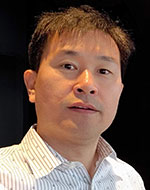 Ki-Dong Lee
Ki-Dong Lee
Zenith Electronics, USA
Ki-Dong Lee has been actively involved in research and standards in the mobile/satellite communications areas, including 3GPP, Next Generation Mobile Network (NGMN) Alliance, IEEE and SAE. Representing LG Electronics, he has led stage-1 C-V2X Study and Work as the first V2X Rapporteur in 3GPP and served as Work Stream Chair of NGMN Alliance V2X Task-Force, which fueled successful enhancements towards advanced V2X scenarios. Ki-Dong served as 3GPP System Architecture WG1 (SA1) as Vice Chairman for two terms, contributing to to productive and effective progress that SA1 has made on the Rel-15/16/17 5G Feasibility Study and Normative Work. Ki-Dong served as guest editor for IEEE Wireless Communications and TPC members of numerous conferences. He is an author of a book, optimization/cryptosystem software applications, several book chapters and many journal publications with the focus on the optimization/scheduling and traffic engineering aspects of radio resource management and protocol design.
Ki-Dong is a recipient of several awards including Outstanding Young Researcher Award (IEEE ComSoc APB, 2005), Young Scholar Award (AP Operational Research Societies, 2006). He holds BS/MS/Ph.D degrees in Industrial and Systems Engineering from KAIST and is Senior Member of the IEEE (since 2007).
Biographies and Photos of Panelists:
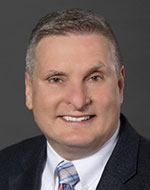 Brian Daly
Brian Daly
Assistant VP, AT&T, US
As Assistant Vice President for Standards & Industry Alliances for AT&T, Brian oversees AT&T’s strategy and leadership in global industry standards. As a technology visionary and thought leader, his focus is on emerging technologies for 5G and beyond; open source; public safety initiatives including mission critical services for FirstNet, earthquake early warning, and wireless emergency alerts; IoT including C-V2X, Smart Cities, UAS/UAVs; Cybersecurity and national security/emergency preparedness/critical infrastructure protection. Brian is engaged in programs with the DHS, DISA, and DoD, and is a leading contributor to the Alliance for Telecommunication Industry Solutions (ATIS) Board, TOPS Council and Standards Committee initiatives, resulting in the implementation of key industry standards. Brian is an appointed member of the FCC’s Technological Advisory Council (TAC) and Communications Reliability, Security, and Interoperability Council (CSRIC), and is a member of the FBI’s Infragard partnership. Brian is a Board member representing ATIS on the National Public Safety Communications Council (NPSTC), and a Board Director on the IEEE International Standards and Technology Organization (IEEE-ISTO). Brian’s industry leadership roles include Co-chair of the FCC TAC 5G/IoT Working Group, Chair of the GSM Association’s North American Fraud Forum and Security Group, Chair of the SAE’s Cellular V2X Advanced Applications Technical Committee, and co-chair of the ANSI Unmanned Aircraft Systems Standardization Collaborative Critical Infrastructure & Environment working group.
Brian received the B.S.E and M.S. degrees in electrical engineering from Arizona State University with a focus on communication systems and electromagnetic engineering. Brian received the ATIS President’s Award and the ANSI Meritorious Service Award in 2011 in recognition of his career creating standards across the communications spectrum, and the NG911 Institute Industry/Private Sector Award in 2012 for his leadership in emergency communications. Brian holds over 170 issued patents in telecommunications, public safety, and cybersecurity.
 Gerry Libunao
Gerry Libunao
DMTS, Verizon, USA
Gerry Libunao is a Distinguished Member of Technical Staff at Verizon Communications supporting Verizon’s Wireless Standardization participation in Industry Forums and Partnership Projects and a key part of Verizon’s Advanced Technology Strategy team. He is the primary GSMA North America contact for Verizon and a member of various GSMA Working Groups and Projects.
Gerry is currently focused on the future evolution of LTE Network Architecture, and 5G for IP based services and applications across industry verticals. This includes his current role as the work task lead in the GSMA and GUTMA collaboration working on Aerial UNI and Service profiles using cellular technologies.
During his 30 years of Telecom Wireless Industry experience, Gerry was involved with a combination of Information Technology positions of increasing responsibility in the areas of Rating, Billing, Customer Care, Service Creation and Delivery platforms. Prior to joining Verizon’s Network organization, Gerry was an IT Architect in the Verizon Wireless Data Solutions Group. Gerry has a Bachelor degree in Physics from Philippine Normal University.
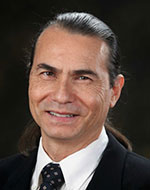 Stephen Hayes
Stephen Hayes
VP, Ericsson, USA
Stephen Hayes is the Vice President of Standards for Ericsson for the Americas. He has worked on various cellular issues over the last 20 years and been heavily involved in the evolution of the 3GPP family of technologies. His current focus includes the ATIS committees and 3GPP. He is also involved in several US advisory groups such as the FCC TAC (Technical Advisory Committee).
Stephen is currently the Vice-Chair of 3GPP TSG-RAN. Stephen was chairman of the 3GPP systems group (3GPP-SA) from 2006- 2011. Before that, Stephen was the chair of the Core Network group in 3GPP. Stephen is also the chair of the 3GPP group on working procedures.
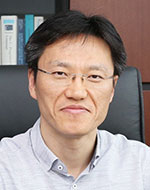 Byoung-Hoon Kim
Byoung-Hoon Kim
Senior VP, LG Electronics, South Korea
Byoung-Hoon Kim received the B.S. and M.E. degrees in electronics engineering, and the Ph.D. degree in electrical engineering and computer science, from Seoul National University, Seoul, Korea, in 1994, 1996, and 2000, respectively. From 2000 to 2003, he was with GCT Semiconductor, Seoul, Korea, developing W-CDMA and WLAN chip sets. From 2003 to 2008, he was with QUALCOMM, Incorporated, San Diego, CA, where he was responsible for MIMO technology development and 3GPP LTE standard and design works. Since March 2008, he has been with LG Electronics currently as Senior Vice President, developing advanced wireless communications technologies including 4G/5G/6G mobile communications, connected car technologies including vehicle-to-everything (V2X), advanced media and broadcasting technologies, and IoT connectivity technologies and service platforms. He has made extensive contributions to 3GPP standard for mobile communication systems since 2005 and 5GAA standard for connected cars during 2017-2018. He was also involved in IEEE 802.11ac, 11af, and 11ah standard works and assumed the role of a member of board of directors of Wi-Fi Alliance during 2011-2012.
Dr. Kim is co-author of Scrambling Techniques for CDMA Communications (Springer, 2001) and was elected as the 1st IEEE Communications Society Asia-Pacific Best Young Researcher in 2001. He holds more than 500 US patents and has published 22 international journals and 21 conference papers in the communications and signal processing areas.
Industry Panel 8 (IP-08, Live): Smart City and Healthcare Systems for Pandemic
Date/Time: 8 December 2020 Tuesday, 14:00-15:30
Location: TICC 4F Elegance Lounge
Organizers:
JaeSeung Song, Professor, Sejong University, South Korea
Chonggang Wang, Principal Engineer, InterDigital, USA
Panelists:
Jaeho Kim, Korea Electronics Technology Institute (KETI) & Sejong University, South Korea
Soumya Datta, EURECOM, France
Martin Bauer, NEC Europe, Germany
Lei Zhang, University of Glasgow, UK
Luis Sanchez, University of Cantabria, Spain
Abstract: The COVID-19 pandemic has completely changed our lives. As a result of this crisis, various new technologies are now used to help human lives, for example, keep connected to our families, tracing pandemic disease, detecting outbreak. Now many researchers are thinking about how emerging technologies especially Smart City and Healthcare Systems using IoT can be used to eradicate the pandemic and get back our normal life. The massive volume of epidemiological and scientific Big Data collected from Smart City and Healthcare systems can empower frontline healthcare workers, strategists, scientists, and epidemiologists to make smart decisions during the COVID-19 pandemic. IoT enabled smart city and healthcare systems can enable scientists to gather, combine, evaluate huge data collected from various smart city services. This will allow such systems to better handle pandemic impacts.
This panel will focus on introducing the smart city and healthcare systems that can be used for the pandemic. The theme, key ideas and structure of the session include:
- Infrastructure and technologies for pandemic
- Data, privacy & security issues to handle huge amount of smart city data for pandemic
- Global standards for IoT, smart city and healthcare system for pandemic
- Testbed and trial systems around the world for pandemic
Biographies and Photos of Panelists:
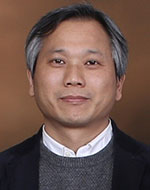 Jaeho Kim
Jaeho Kim
Korea Electronics Technology Institute (KETI) & Sejong University, South Korea
Dr. Jaeho Kim is a professor in the department of electric engineering in Sejong University, Seoul, Korea. He served as a director in Autonomous IoT Research Center at the Korea Electronics Technology Institute (KETI), South Korea. He has led research projects for IoT Platform, Smart City Data Hub, Unmanned Aerial Vehicle Platform, EISS (Epidemic Investigation Support System) for COVID-19 recently. His expertise covers the IoT platforms, intelligent systems and networks. He is now serving as IoT and Smart City Platform Project Group chair of TTA (Telecommunications Technology Association). He received a Ph.D in the electrical & electronic engineering from the Yonsei University, South Korea. His research interests are in the areas of autonomous Things, smart city, and UAV traffic management.
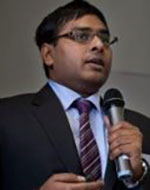 Soumya Datta
Soumya Datta
EURECOM, France
Soumya Kanti Datta is a Co-Founder of Future Tech Lab in India. His activities focus on innovation, standardization, generation of new ideas and development of next-generation technologies in Internet of Things (IoT), Smart City and Computer Security. He has published more than 45 research papers in top IEEE Conferences and Journals. He is a frequent participant of ETSI events and regularly gives presentations on M2M, IoT, Smart Cities, Mobile Edge Computing at various events including ETSI. Currently he is involved in oneM2M and W3C Web of Things Interest Group and actively contributing to their standard development activities. Soumya completed his M.S in Computer Security from Telecom ParisTech (EURECOM), France.
Martin Bauer
NEC Europe, Germany
Martin Bauer is a Senior Researcher at the IoT research group at the NEC Laboratories Europe (NLE) in Heidelberg, Germany. He received his MSc in Computer and Information Science from the University of Oregon, USA, in 1998, and both his Dipl. Inf. and his doctorate degree from the University of Stuttgart, Germany, in 2000 and 2007 respectively. In 2005 he joined the NEC Laboratories Europe (NLE), where he has been working on context and IoT related research projects as well as standardization activities in the same areas. In particular, Martin Bauer is/has been working on a number of European research projects, most recently in the large scale pilots in IoT, Autopilot and Synchronicity, and in the EU-Japan project Fed4IoT. In standardization, he has actively contributed to OMA NGSI, oneM2M and currently ETSI ISG CIM, primarily on topics related to context management and semantics. Martin Bauer is a personal member of the FIWARE Foundation, which is managing, promoting and evolving the open source platform for smart IoT scenarios. He currently serves as a member of the FIWARE Technical Steering Committee (TSC). Furthermore, he is the AIOTI WG03 sub-group chair for the semantic interoperability topic. He has (co-) authored more than 50 technical papers and has been active as peer reviewer and program committee member for several journals, conferences and workshops. He is a member of IEEE, IEEE Computer Society, IEEE Communications Society and ACM.
 Lei Zhang
Lei Zhang
University of Glasgow, UK
Dr. Lei Zhang is a Senior Lecturer (Associate Professor) at the University of Glasgow, U.K. He received his Ph.D. from the University of Sheffield, U.K. His research interests include wireless communication systems and networks, blockchain technology, data privacy and security, radio access network slicing (RAN slicing), Internet of Things (IoT), multi-antenna signal processing, MIMO systems, etc. He has 19 patents granted/filed in more than 30 countries/regions including US/UK/EU/China/Japan etc. Dr Zhang has published 3 books and 100+ peer-reviewed papers. He received IEEE Communication Society TAOS Best Paper Award 2019. He is a Technical Committee Chair of 5th International conference on UK-China Emerging Technologies (UCET) 2020. He was the Publication and Registration Chair of IEEE Sensor Array and Multichannel (SAM) 2018, Co-chair of Cyber-C Blockchain workshop 2019. He is an associate editor of IEEE Internet of Things (IoT) Journal, IEEE Wireless Communications Letters and Digital Communications and Networks. Dr Zhang’s research was widely covered by media including BBC.
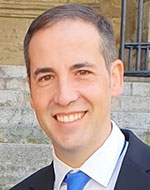 Luis Sanchez
Luis Sanchez
University of Cantabria, Spain
Dr. Luis Sanchez received the Telecommunications Engineering and Ph.D. degrees from the University of Cantabria, Spain, in 2002 and 2009, respectively. He is currently an Associate Professor at the Department of Communications Engineering, University of Cantabria. He is active on IoT-enabled smart cities, meshed networking on heterogeneous wireless scenarios, and optimization of network performance through cognitive networking techniques. He has a long research record involved on and coordinating projects belonging to the fifth, sixth, seventh, and H2020 EU Framework Programs. He has authored more than 80 papers at international journals and conferences and co-authored several books. Dr. Sanchez often participates in panels and round tables discussing about innovation supported by IoT in smart cities. He also acts as an external expert for research programs evaluation at Spanish AEI (Agencia Estatal de Investigación), French ANR (Agencie National Recherche) and Italian MIUR (Ministero dell’Istruzione, dell’Universit˜A e della Ricerca) reviewing and evaluating research and development proposals.






